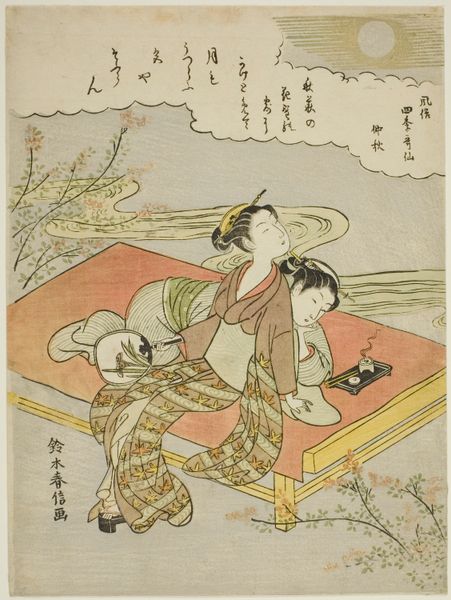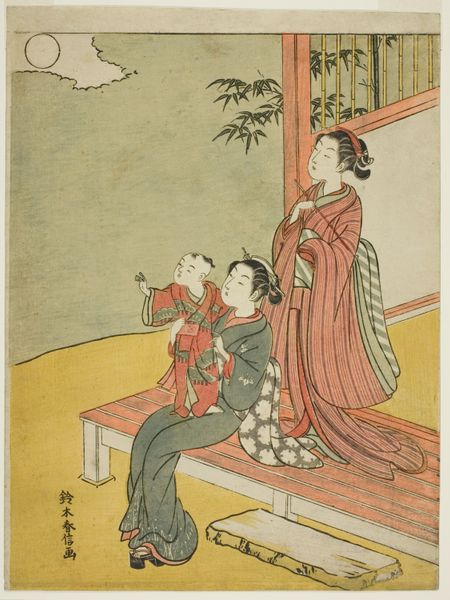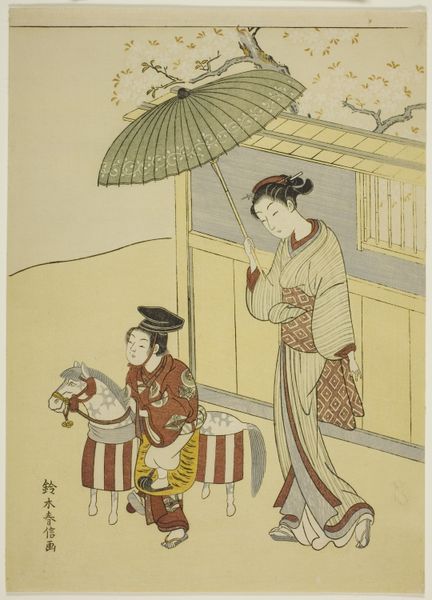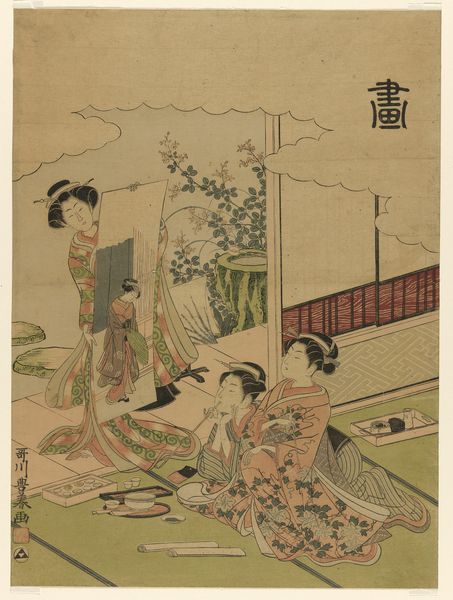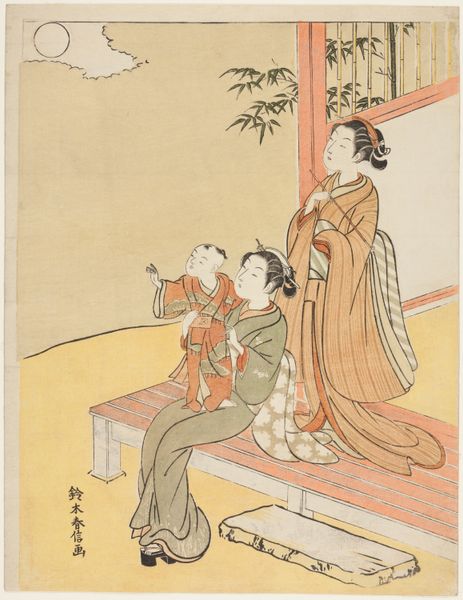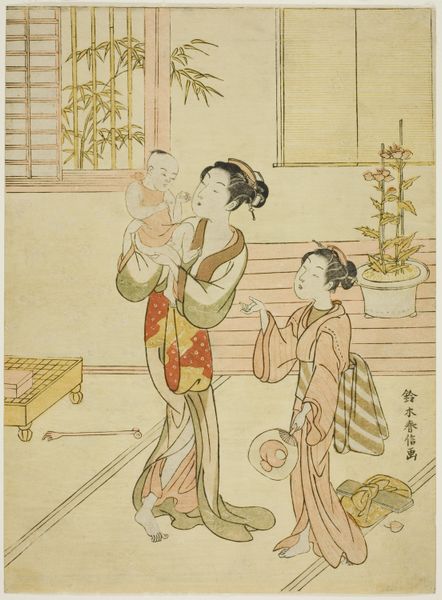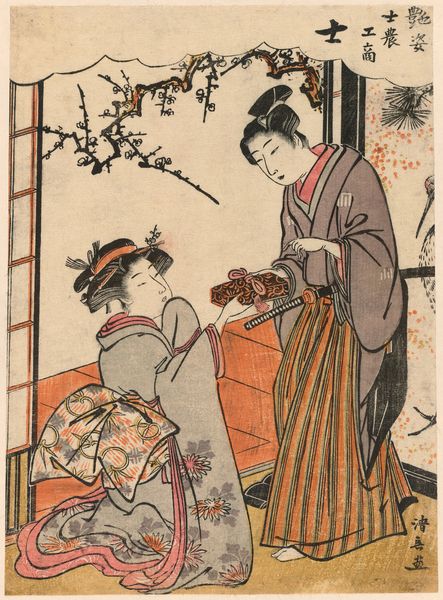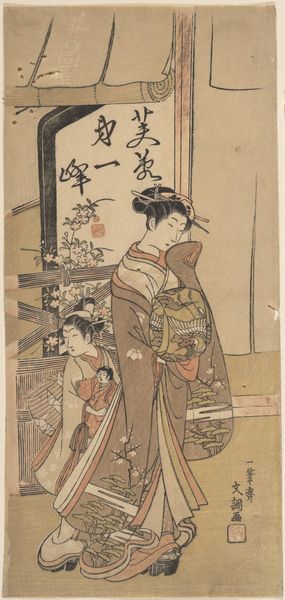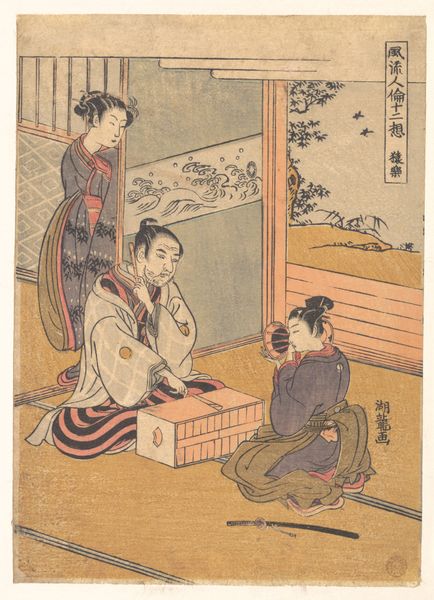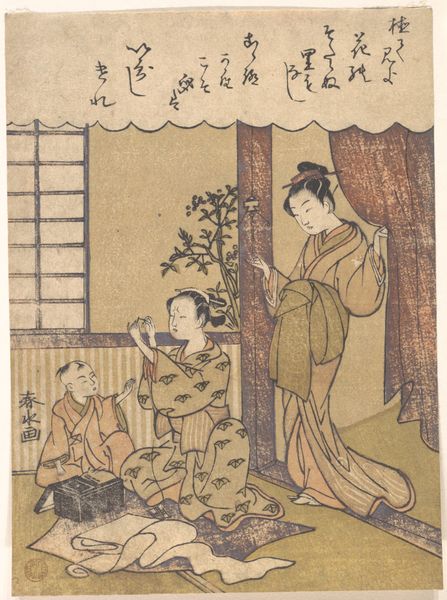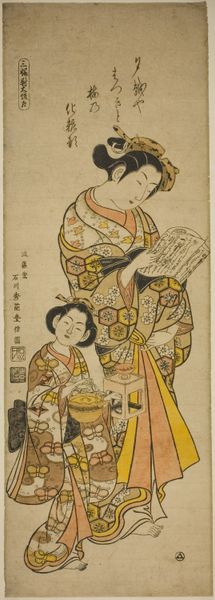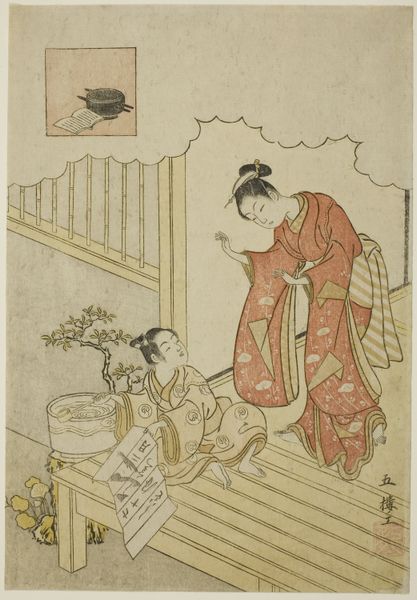
Young Woman Viewing Cherry Blossoms as a Mitate of Lady Nakanokimi c. 1767 - 1768
0:00
0:00
print, ink, woodblock-print
#
portrait
# print
#
asian-art
#
ukiyo-e
#
japan
#
figuration
#
ink
#
woodblock-print
#
genre-painting
Dimensions: 11 × 8 1/8 in. (28 × 20.6 cm) (image, sheet, vertical chūban)
Copyright: Public Domain
Editor: Here we have Suzuki Harunobu's woodblock print, "Young Woman Viewing Cherry Blossoms as a Mitate of Lady Nakanokimi," created around 1767 or 1768. It’s striking how delicate the colors are and how tranquil the scene feels. What do you make of the way Harunobu connects this image to Lady Nakanokimi? Curator: Well, the concept of 'mitate' is key here. It's a visual metaphor, a playful reinterpretation. The artist isn't just depicting women enjoying cherry blossoms. He's invoking the image, the spirit, even, of Lady Nakanokimi, a character known for her refined taste. This print functions, therefore, on two levels: a genre scene and an allusion to classical literature. How do you think that dual function changes its meaning? Editor: I guess it elevates it beyond a simple snapshot. It's like he’s adding a layer of intellectual play, making it a piece for those "in the know," familiar with those classic stories. Curator: Precisely! And that's where the cultural context becomes fascinating. These prints weren't just commodities; they were communicating social and cultural values. By referencing classical themes within the 'floating world' aesthetic of ukiyo-e, Harunobu’s cleverly blurring the lines between the high culture of the aristocracy and the emerging merchant class. The very act of recreating and selling this says something about the status of artists at this time, what stories sold, what symbols they employed. It becomes a kind of cultural commentary in itself, wouldn’t you agree? Editor: That's so insightful! I hadn't considered the class dynamic at play here. It's not just a pretty picture, but a conversation about society itself, a new idea of class distinctions taking root and changing Japanese culture. Curator: Indeed! The politics of imagery are always complex and revealing if you scratch below the surface, as Harunobu surely realized. Editor: This was definitely a fascinating new lens through which to consider Ukiyo-e works. Curator: Glad to help offer insight on Suzuki Harunobu's masterful image and the layered narratives within!
Comments
minneapolisinstituteofart almost 2 years ago
⋮
Probably imagined by Suzuki Harunobu as a companion to the similar parody of Prince Kaoru (74.1.95), this print likely is a contemporary reimagining of Lady Nakanokimi from The Tale of Genji. Lady Nakanokimi is the true love of Prince Kaoru (the boy raised as Genji’s son) but is betrothed to his best friend. In chapter 48, “Early Ferns,” Prince Kaoru sends a carriage to transport Lady Nakanokimi to her purification ceremony that comes before the marriage ceremony. The carriages used by aristocrats in classical Japan, however, were the type of stately oxen-pulled lacquer carriages seen in many of the paintings in this exhibition. Here, the artist Suzuki Harunobu transforms Nakanokimi into a contemporary woman, wearing fashionable clothing, smoking a pipe, and riding in the type of palanquin (covered seat carried by servants) commonly seen in the 1700s when this print was created.
Join the conversation
Join millions of artists and users on Artera today and experience the ultimate creative platform.
